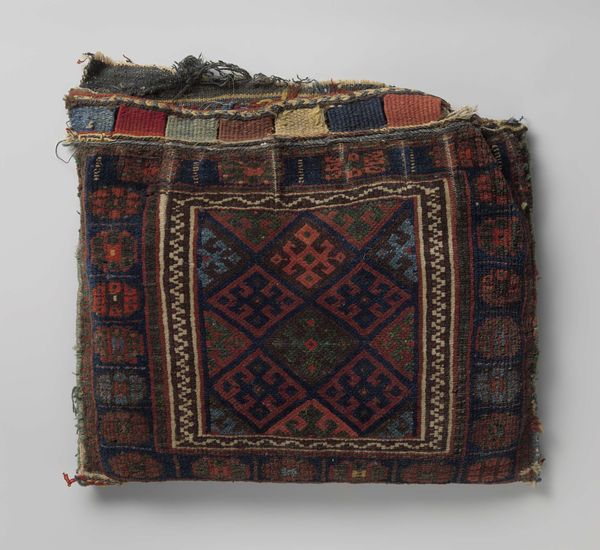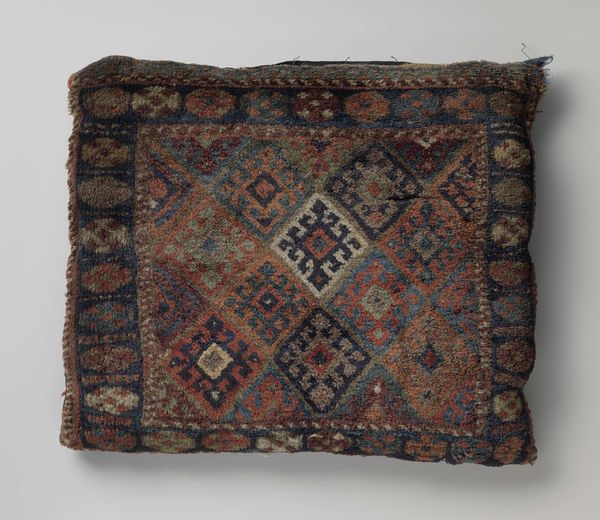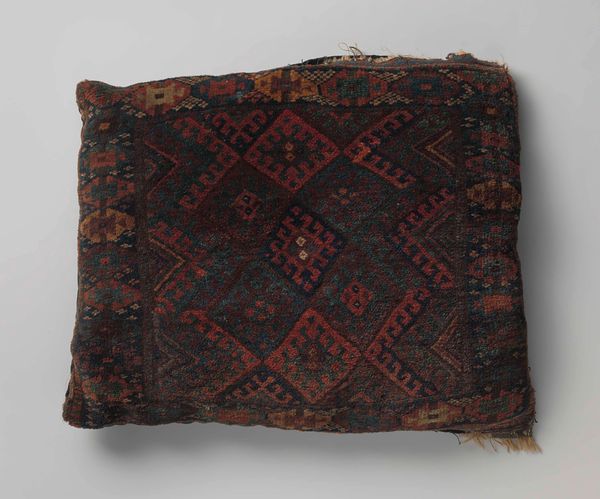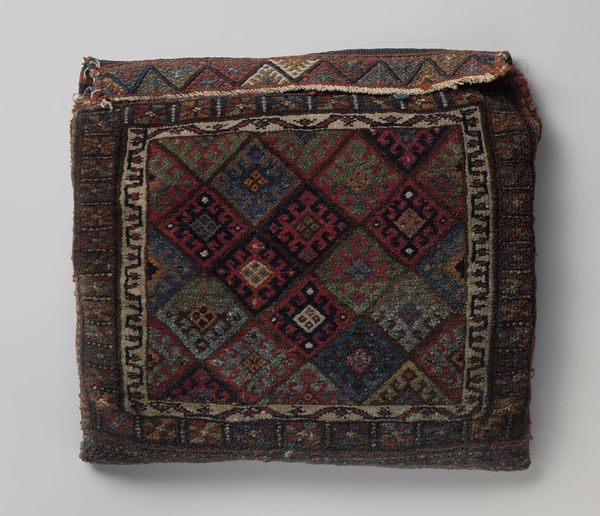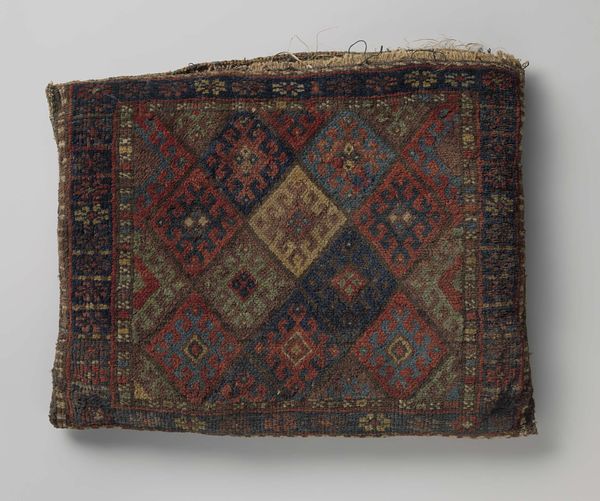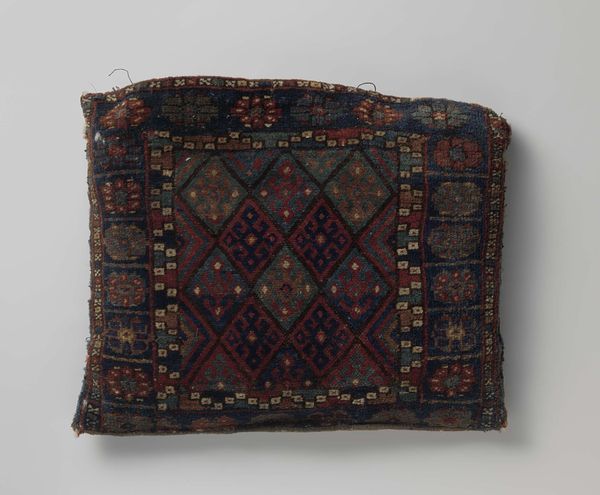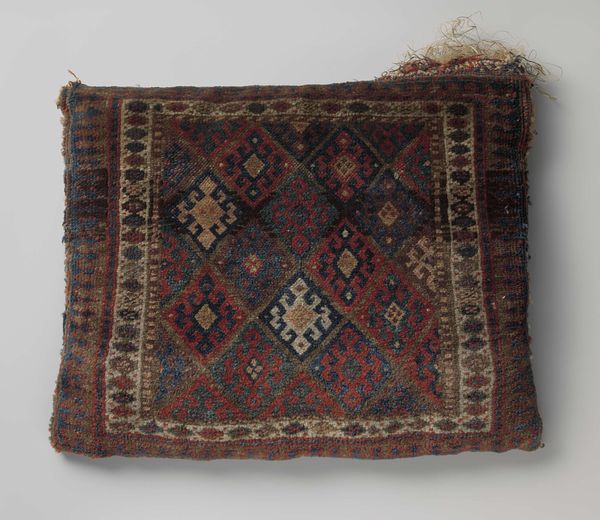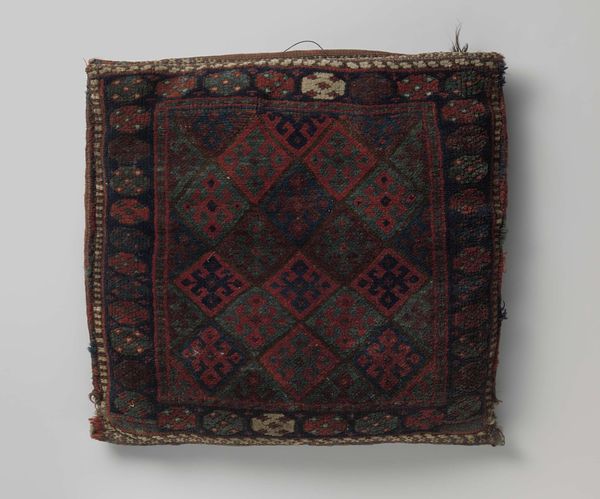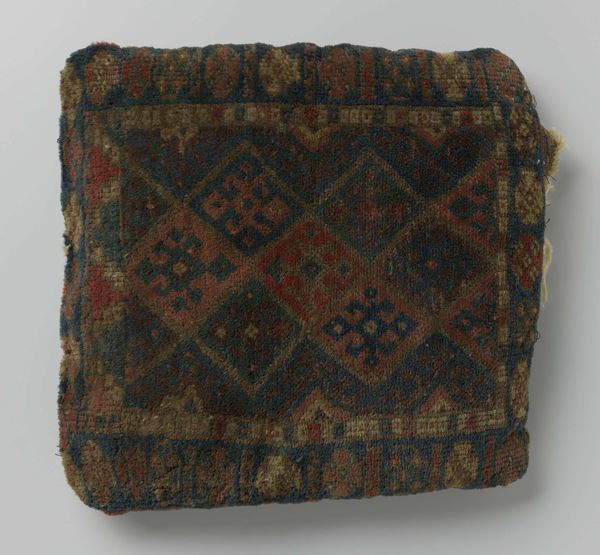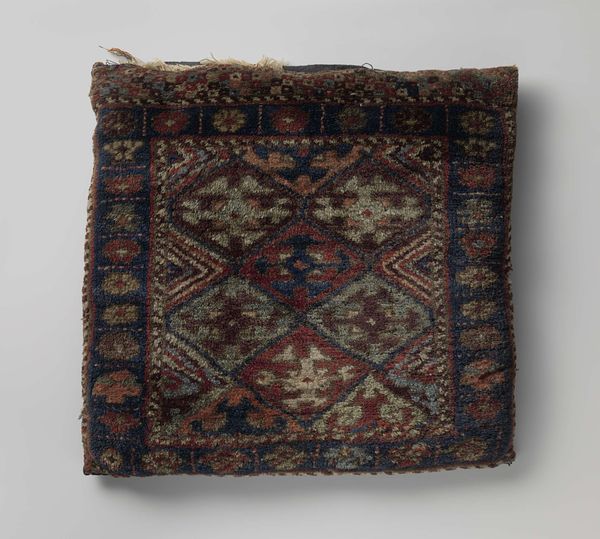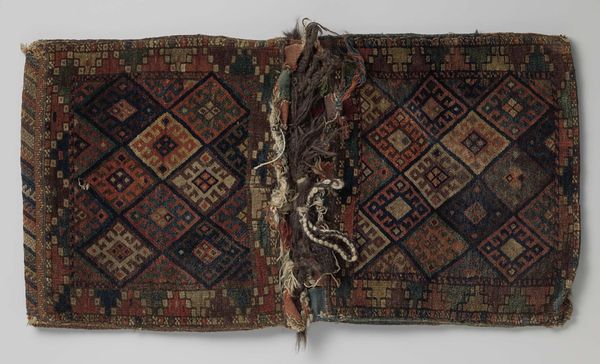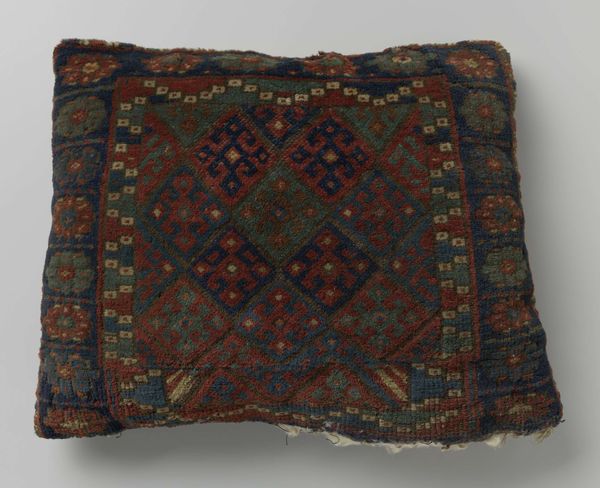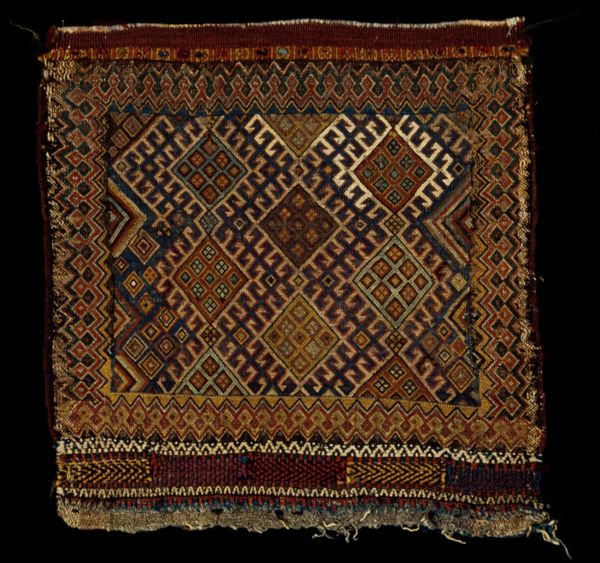
Voorblad zadeltas versierd met ruiten; buitenste rand met rechthoeken en rozetbloemen c. 1850 - 1900
0:00
0:00
#
natural stone pattern
#
collage layering style
#
pattern making
#
fashion and textile design
#
hand-embroidered
#
fabric design
#
regular pattern
#
pattern repetition
#
imprinted textile
#
layered pattern
Dimensions: height 55 cm, width 61 cm, depth 12 cm
Copyright: Rijks Museum: Open Domain
This saddlebag cover ornamented with diamonds, rectangles and rosette flowers was made by the Jaffi people. The Jaffi are a Kurdish tribe, many of whom live as nomadic pastoralists. Looking at this textile, we can appreciate the labour and skill that would have gone into producing it, and how the materials used would have been sourced locally. As an object of functional use, the saddlebag reflects the practical needs of a nomadic people. At the same time, the repeated geometric forms and borders of floral motifs are aesthetically pleasing. It shows an appreciation for visual harmony through symmetry and pattern. It is important to note that many cultures do not separate the category of art from that of craft. The study of ethnography is essential to understanding the culture of the Jaffi people. This includes considering the social and economic conditions that might have influenced the artist. Ethnographic research can help us to appreciate the complexities of the society in which this textile was produced.
Comments
No comments
Be the first to comment and join the conversation on the ultimate creative platform.
